CHAPTER 5
POLISHED FACETED RAINBOW CRYSTALS
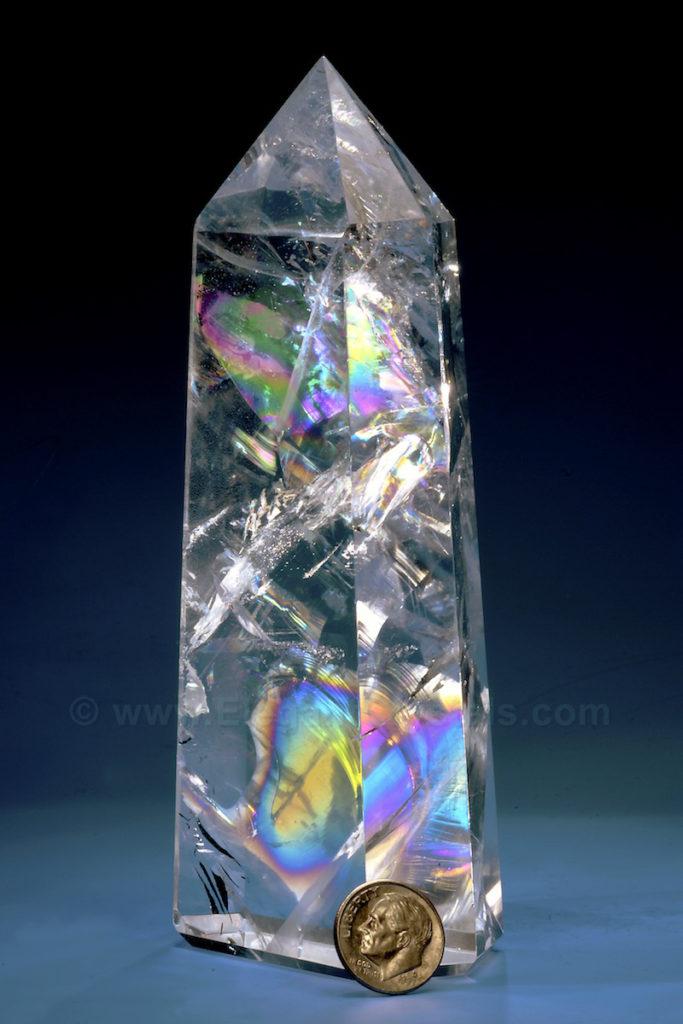
Picture #79
6-inch-tall Polished Quartz Crystal from Brazil
Why do people polish crystals?
Don’t they all look beautiful when you dig them out of the ground?
The quality of crystals varies greatly from country to country, mining location to mining location, and even within the same cave or pocket (called a vug or a geode.)
Crystals that are chipped or encrusted are great candidates for polishing.
Let’s look at some possible differences in the formations of crystals:
Size- from millimeter crystal grains to multi-ton giants.
Individual crystals found on earth range up to 100,000 pounds or more!
Bigger crystals are more likely to have opaque crusts on the surfaces.
Larger planets presumably have much bigger crystals.
Clarity- from solid opacity to total transparency.
Within this range, I think the “lightly included” crystals have the most interesting colors, layers and depths.
I particularly enjoy the ones with iris rainbow fissures.
Surface quality- naturally faceted crystals dug from the earth sometimes have completely flat, smooth, glossy faces with crisp edges.
Arkansas is known for its shiny quartz.
Other locations yield much duller-looking crystals.
The facets may be frosty, crusted with hard brown minerals, chipped or exceedingly scratched.
Dirt and coatings- newly dug gemstones and crystals come out of dirt, mud, or sand.
They typically looking like a lump of sticky red clay with tiny points sticking out.
Baked on mineral crusts, cooked on sand or metal-oxide coatings complicate the cleaning process.
Polishing improves a lot of “defects” in the crystals.
Check out the whole mining and cleaning process in the free book on my website
Crystal Treasure Trove
at www.ElegantCrystals.com
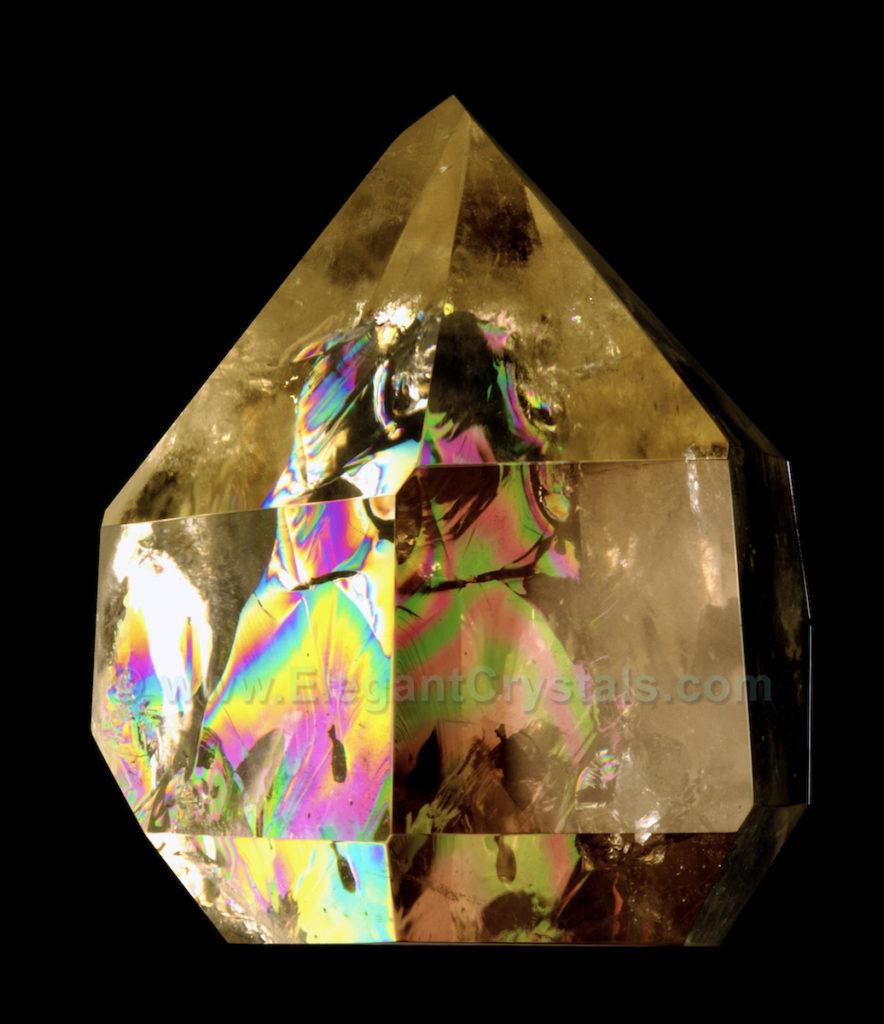
Picture #80
10-inch-high Polished Citrine Quartz
from Minais Gerais State, Brazil
If a crystal needs help to increase interior visibility, lapidary artists/crystal cutters will slice, grind, polish and glaze the stone.
Sometimes they selectively polish one or two sides only, but more typically, the whole stone is faceted (cut flat and highly polished.)
This sculpting can create a wholly new shape, or it can yield a crystalline structure that preserves the natural angles.
The large rainbow citrine shown here had a ¼” layer shaved off each facet.
This removes crusty brown manganese-oxide deposits from all its sides.
Then the base was sawn flat so it stands straight up.
Now the finished piece is a giant gemstone with 19 sides.
Notice the enormous rainbow inside.
It refracts out through six huge facets, creating multiple views of the lovely colors.

Picture #81
18-inch-long Polished Brazilian Quartz
Quartz crystals are known for their exceptionally good clarity, even in larger pieces.
Sometimes quartz contains absolutely clear zones ranging up to one or two feet wide.
More typically, a series of inclusions will be visible inside the crystals.
Types of Inclusions:
Water and gas bubbles
Waves of mist
Silvery cracks and fissures
Small mineral crystals or floating gemstones
Layers and clumps of sand or clay
Thin sheets of colored particles.
When silvery fissures are visible, they reflect and even amplify the light falling on them.
As the crystal turns or spins, these metallic-looking mirrors can reflect a vivid rainbow of light.
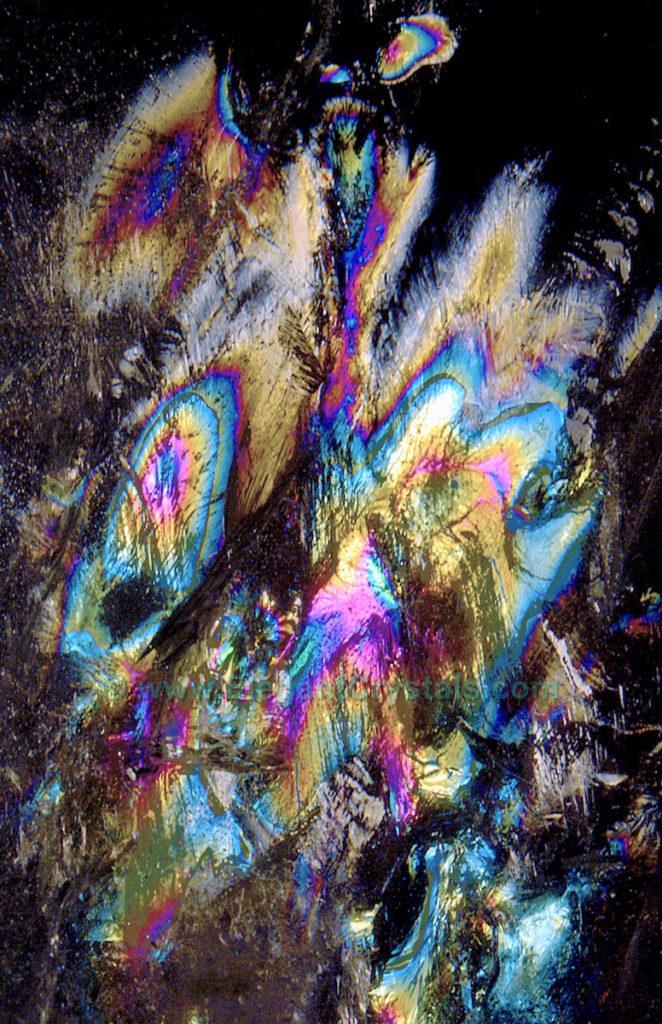
Picture #82
Closeup Image of an 18-inch-long Polished Brazilian Quartz
As we move closer to the same crystal, the colors and details resolve into fantastic works of ancient art, crafted by the Divine Creator in conjunction with Mother Gaia.
These graceful designs share a lot of information about color, shape, movement, geometry, and wave patterns.
They patterns evoke interesting feelings and memories.
The crystals are primordial educational tools on so many levels.
Rainbow fissures have tremendous variability in their appearance, depending on
light levels,
angle of view,
even the type of lightbulb
or the time of day.
Each rainbow, no matter how large or small, is a light-show – a one of a kind psychedelic display.

Picture #83
Close-up Image of an 18-inch-long Polished Brazilian Quartz
Notice the subtle differences, as the same crystal is rotated in front of the camera.
The colors are a little different while the shapes are familiar yet still mysterious.
The color “palette” of the images remains consistent as long as we don’t switch to sunlight or a different colored light bulb.
These closeup views are great for playing the cloud-gazing game.
Instead of fleeting clouds, you can use crystal patterns to trigger deeply evocative images and feelings from your past memories and experiences.

Picture #84
5-inch-long Polished Brazilian Quartz
Faceted with 22 Sides in a Vogel Design
When crystals and gems are faceted with more and more sides, the sparkle factor goes way up.
In the gem trade, this brilliance is called “fire,” which helps determine the value of gemstones like diamonds.
The fire depends on both the number of facets, the shape, and the refractive index of the material.
The refractive index is the degree to which an incoming beam of light is bent as it enters the gem at an angle.
Diamond, rutile and zircons have the most potential for great brilliance.
Quartz does not have the inherent fire that a diamond may have, yet its twinkly fractures (a type of inclusion) make it one of the liveliest stones ever, especially in the larger sizes.
Precious gems rarely exceed one inch long, while quartz crystals have been found measuring over 20-feet-long.
The rainbow in this crystal lies right under the tip.
The fissures iridesce, then reflect and refract through the many facets, creating a kaleidoscope effect.
This shape of crystal was created by Dr. Marcel Vogel, a researcher at IBM.
He calibrated the sizes and angles to maximize the amplification of piezo-electric energy and healing vibrations within the crystal.
Some practitioners use these finely-tuned electro-magnetic crystals in conjunction with massage therapy and hands-on healing work.
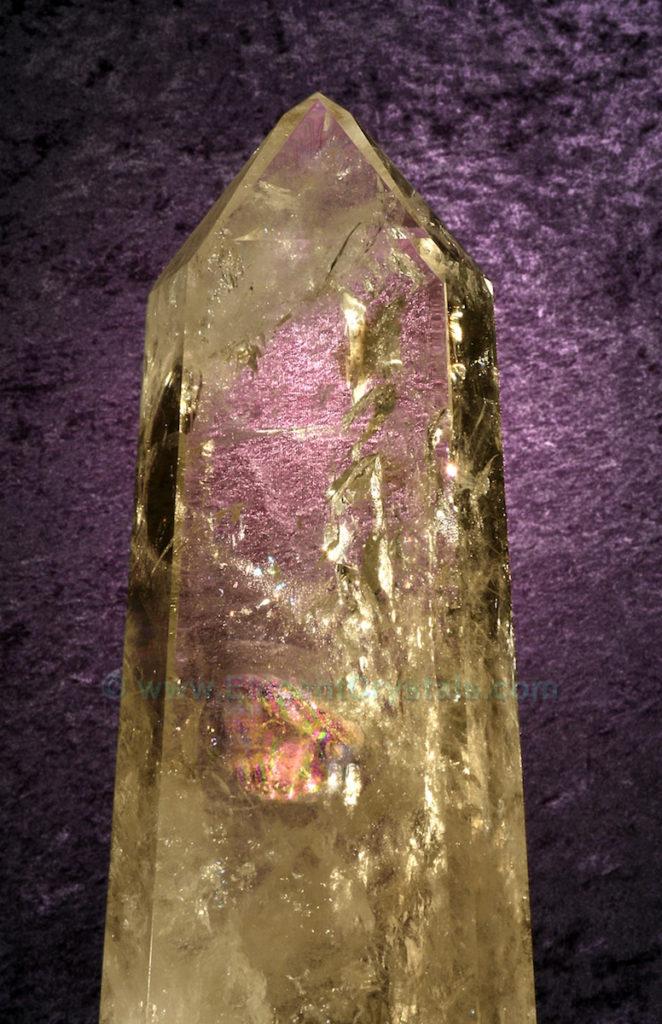
Picture #85
20-inch-tall Citrine Quartz from Brazil
When a crystal cutter polishes a stone, he plans to remove as little material as possible, to leave the biggest possible stone for sale.
Many crystals and gems are sold to stores by weight, and then repriced individually, by quality, for ultimate resale.
It’s easy to use weights and prices to compare different stones.
Look at the price per carat, or the price per pound to see if you are getting a good deal.
Like diamonds, quartz is valued depending on:
Size
Clarity
Color
Inclusions
Unlike diamonds, where anything inside the gem makes it worth a lot less, the best inclusions in quartz can boost the value immensely, depending on the beauty and rarity factors.
The color of the crystal also helps determine its price.
White, purple and tan crystals are relatively common, while natural golden citrine quartz is quite unusual and highly treasured.
Check out the next two images for closeup details of this handsome tower.
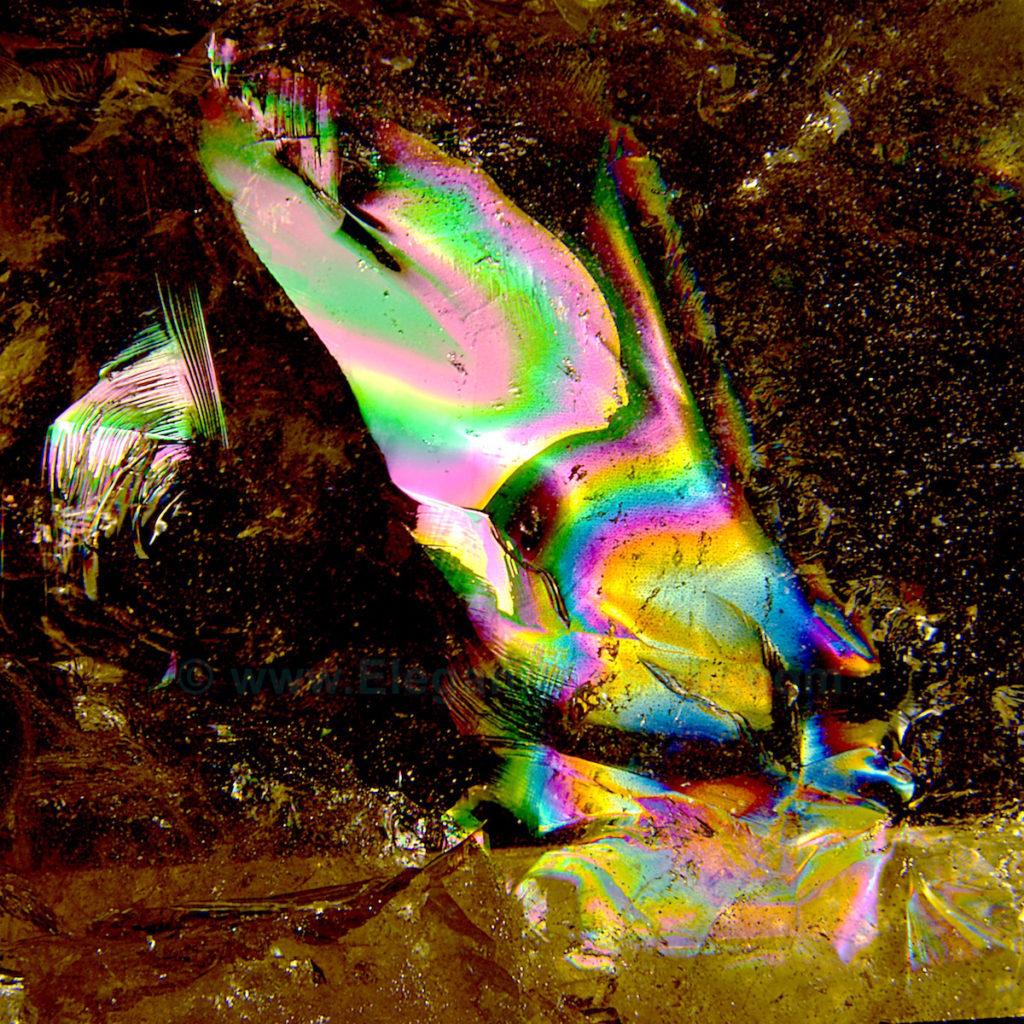
Picture #86
Closeup Image in a 20-inch-tall Citrine Quartz from Brazil
The rainbow colors in citrine have shifted to the yellow tones here.
The golds are boosted while most of the blue is absorbed by the golden quartz.
These elegant shapes might evoke an image or memory for you- what do you see?
Can you imagine a rainbow tornado inside?
I spy:
an angel dancing,
a candle burning,
a whale breaching and
a feather floating.

Picture #87
Closeup Image of a 20-inch-tall Citrine Quartz from Brazil
Most ‘iris’ crystals have multiple rainbows inside.
The color area might only be a few millimeters long, but still be strikingly visible.
I usually look for larger rainbow areas to photograph.
It is much easier to frame the camera on a one-inch-wide color zone than a millimeter-long fleck.
I can do both, but the tiny close-up of a rainbow is much more demanding of my time and attention.
It is so hard to focus the camera in that situation.
In this crystal, the color layers are interspersed with tiny bubbles on the left side, and black areas, which come from a dark cloth behind the clear crystals.
The dark cloth increases the contrast of the oil-slick appearance by absorbing any extraneous light coming through from behind.
